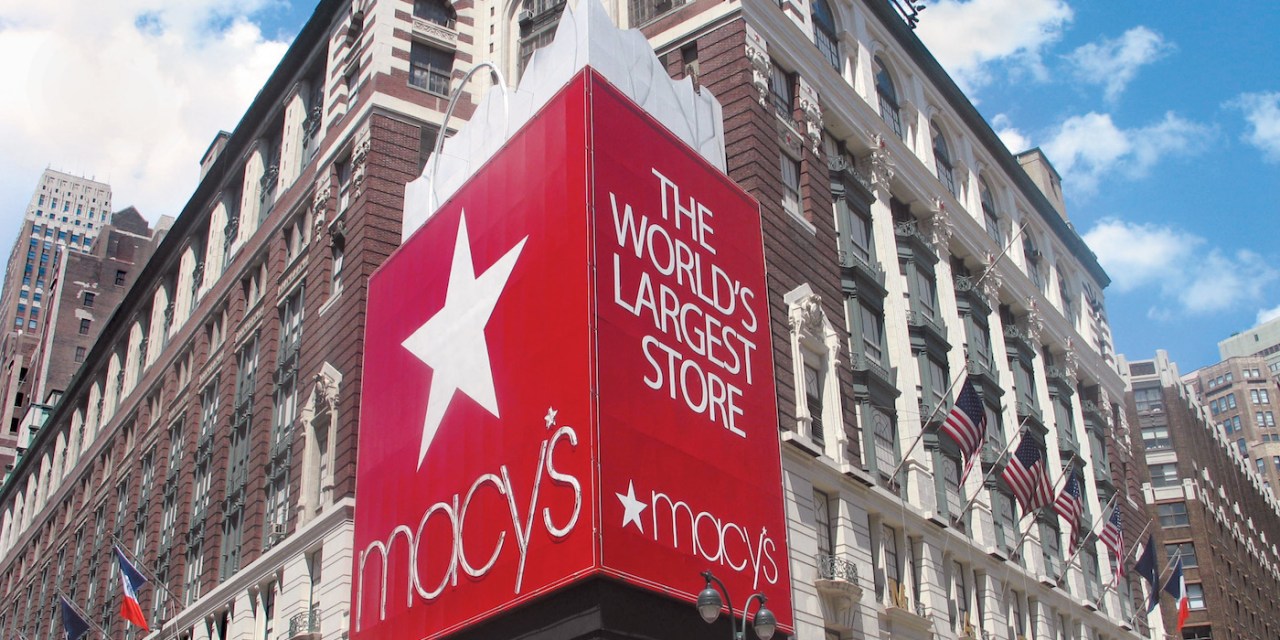How department stores are attempting to win over more luxury shoppers

More department stores are hoping to win over big spenders.
Dillard’s unveiled The Coterie Shop last week, a new concept that features merchandise from four luxury designers, which will be available online and in select in-store locations. Macy’s launched a luxury beauty concept in its Miami store back in December in order to build on its luxury beauty business, which also consists of Bluemercury. Saks Fifth Avenue, on the other hand, opened an experiential store in Beverly Hills that offers private shopping and styling services.
For years, some department stores have been attempting to be considered a shopping destination for luxury buyers. But winning over luxury shoppers, who have historically been immune to economic challenges, is now more critical than ever. According to the Commerce Department, retail sales dropped 0.8% in January, which signals how financial constraints like high-interest rates are impacting shoppers’ spending habits.
“The American high-end consumer is remarkably resilient and continues to be very interested in buying things,” said Charlie Skuba, emeritus professor of the practice in marketing and international business at Georgetown University. “People are still willing to pay very high prices for the combination of quality, rarity and exclusivity.”
Compared to other retail categories, luxury is proving to be a more resilient category. LVMH — which owns luxury brands like Louis Vuitton, Givenchy and Sephora — saw 2023 sales rise 13% to 86.15 billion euros ($93 billion) compared to last year. Hermes’s annual revenue climbed 21%.
Meanwhile, department stores haven’t been performing quite as well as luxury players. Dillard’s total retail sales in the third quarter declined by 6% and its net income dropped to $155.3 million compared to $187.9 million around the same period last year. At Macy’s, brick-and-mortar sales declined 7% in the third quarter, while digital sales were down 7%. Macy’s financial struggles has made it a takeover target for an investment group, which consists of Arkhouse Management and Brigade Capital.
By adding more luxury concepts in their locations, department stores not only attract luxury shoppers but also foot traffic from existing shoppers and tourists, said Heidi Csencsits, senior manager at consultancy firm The Parker Avery Group.
“Foot traffic in most locations, especially department stores, has been decreasing consistently over time,” Csencsits said. “Having these luxury [brands] will bring in the high spenders but it’ll also bring in tourists, other local customers to see and experience the luxury lifestyle without the intimidation of going into a single brand boutique.”
Department stores can get better margins when they sell higher priced luxury goods. Dillard’s The Coterie Shop features special occasion and casual dressing items from luxury designers like Abbey Glass, Buru, Crosby by Mollie Burch and Fanm Mon. Products from these new designers are in the $250-$400 range.
Luxury concepts also feature elevated shopping experiences that aren’t traditionally found in most department stores. For example, Macy’s luxury beauty concept in its Miami store offers virtual try-on technologies and three relaxation rooms. Brands like La Mer, Dior and Clarins also have aestheticians available on-site.
Macy’s has previously stated that it sees luxury as a key “growth vector.” In a presentation from its third-quarter earnings call in November, Macy’s executives said that acquiring and retaining customers at Bloomingdale’s, Bluemercury and its Macy’s beauty business as critical to growing luxury sales. Macy’s acquired Bluemercury for $210 million in 2015.
“We view our positioning and offerings across all three nameplates as a competitive advantage as the luxury business continues to normalize,” Tony Spring, CEO and chair-elect of Macy’s, said during the company’s third quarter earnings call. “We remain confident in luxury’s long-term growth potential.”
Much like the new Macy’s beauty concept, Saks Fifth Avenue’s new Beverly Hills shop also has unique features. The store is home to Saks’ Fifth Avenue Club, a personal shopping and styling service that is free of charge and open to the public. The new shop also has an outdoor dining terrace that overlooks the Hollywood Hills.
Although these luxury concepts have the potential to attract new customers, department stores also run the risk of losing their existing customer base, said Kassi Socha, director analyst at research firm Gartner.
“Almost half of consumers still shop where price is top of mind and these consumers are at high risk of trading down to less expensive or generic brands,” Socha said. “What this means is you can’t sacrifice the way that you’ve been doing things just to attract a new consumer.”
Additionally, investments in these luxury concepts and experiences aren’t cheap. The Hollywood Reporter indicates that Saks spent $52 million to renovate its new Beverly Hills store.
Investing in luxury might not be enough to save department stores from financial woes. Luxury department store Neiman Marcus filed for bankruptcy in 2020. Meanwhile, Nordstrom — which was historically known for serving more of a luxury customer — has been opening more off-price locations. Last year, Nordstrom announced plans to open nine more locations for its off-price concept Nordstrom Rack.
“Established department stores that have historically not served the luxury customer, as they get into serving a luxury customer, need to think about the fact that they’re expanding assortment and choice,” Socha said. “Just because someone is often a luxury shopper doesn’t mean that every purchase that they make is a luxury item or good. Just because someone’s a pragmatic shopper or price deterrent shopper doesn’t mean that there’s moments in time where they won’t stretch themselves to luxury goods.”

